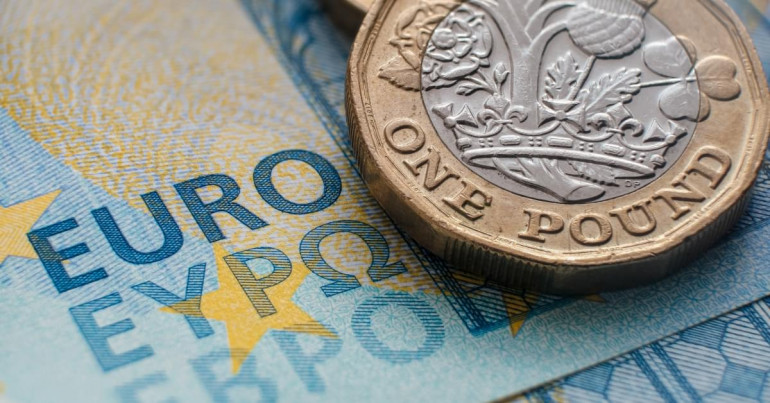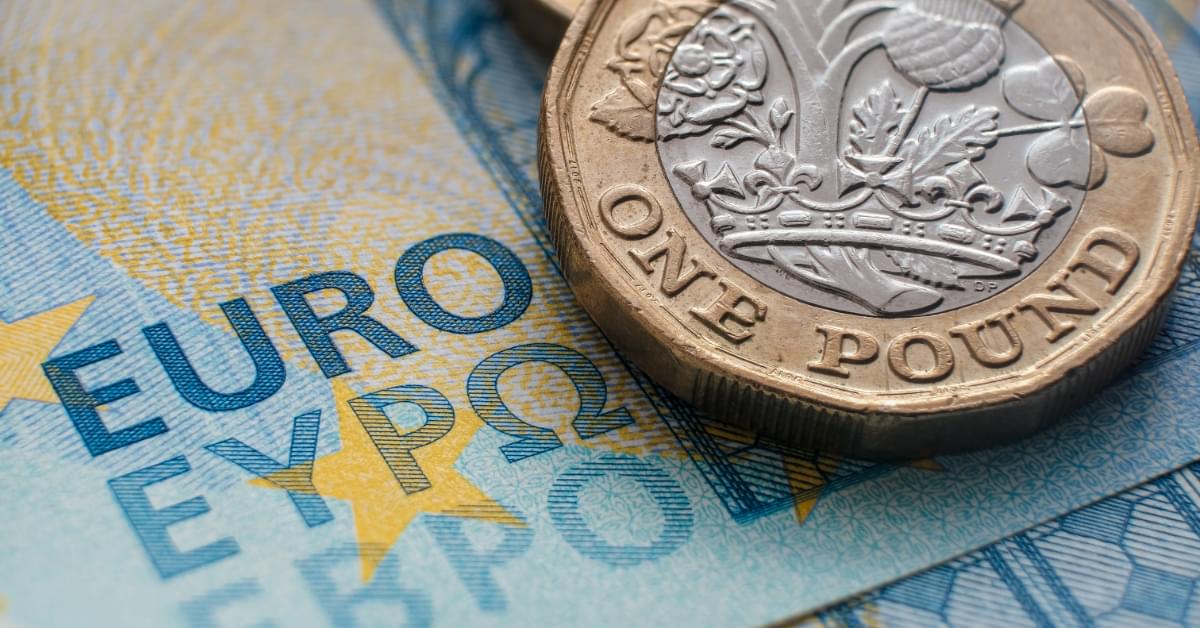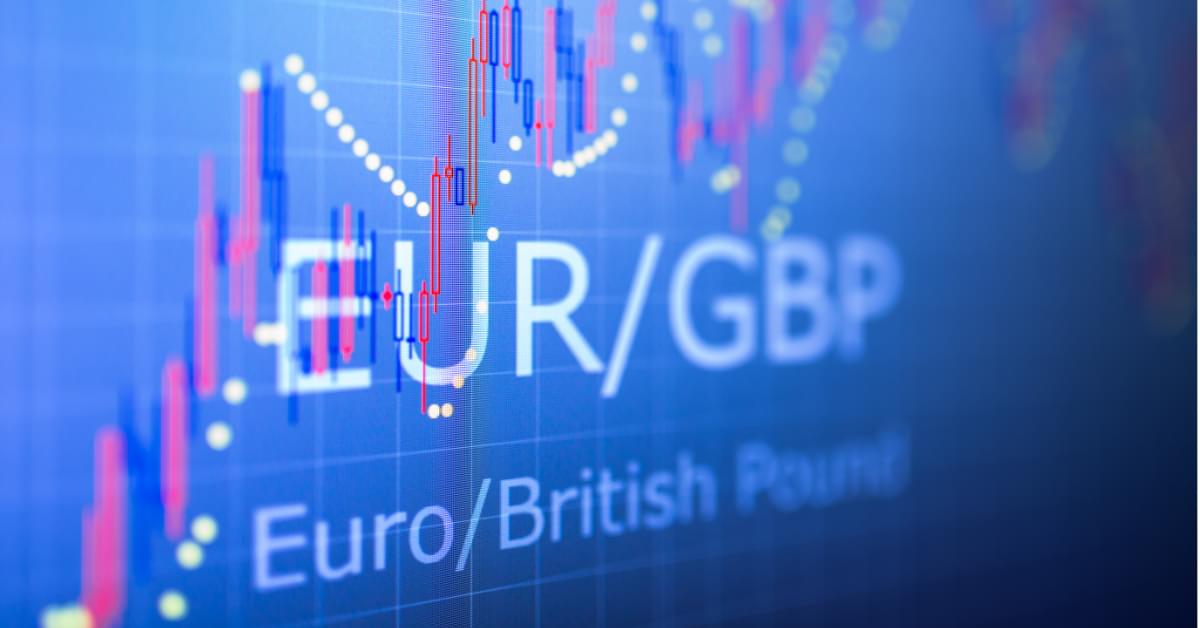
The pound and the euro’s relationship has varied throughout the last few years, but has generally followed the relationship between the UK economy and the European Union.
The pound is the oldest currency in the world, but the euro has only been around since 1999 for accounting and electronic purposes, and official circulation since 2002.
The euro is the official currency of 20 of the 26 states of the European Union, with Bulgaria and Romania expected to join in 2025 and 2026, respectively. The group of countries that are circulating the euro is known as the eurozone, and as of 2023, has reached a population of 344 million.

When was the euro introduced?
The euro was technically introduced on 1st January 1999, but it was not until 2002 that the currency began to circulate. The euro was introduced on its first day of trading on Monday, 4th January 1999, and from this point on, all European markets were pricing stocks and bonds, and executing all trades in euros. However, local currencies were still used for everyday transactions.
Initial results from the euro were very positive. According to a 1999 report from The Washington Post, David Bloom, a currency strategist at HSBC, remarked: “It’s probably the biggest economic event we’ll see in our lifetime, and you can say with some confidence it started off well.”
However, very quickly the euro began to slip, and the highest pound-to-euro rate ever was reached on 3rd May 2000 at £1 = €1.752 as doubts over the euro began to rise. Individual government measures and the G7’s intervention prevented the collapse of the euro, which dropped below the price of the US dollar on 3rd December 1999. This was significant, as one of the hopes of the euro is that it would be able to challenge the US dollar as a reserve currency.
2007 financial crisis
Post-2002, after the euro was rescued, the value of the pound was relatively stable and settled on average at about €1.40. The pound and the euro both showed positive growth, until the 2007 financial crisis struck.
Market volatility and uncertainty was rife, and the pound weakened against the euro as the crisis deepened, due to the pound’s stronger links to the dollar. Recession pressures drove the pound lower, and it reached €1.02 on 30th December 2008 – as of today, the lowest-ever exchange rate for the pound. The UK economy managed to weather the credit crunch, and narrowly avoid the pound becoming less valuable than the euro.
Eurozone debt crisis
In late 2009, the Eurozone debt crisis struck – an economic crisis that affected several eurozone countries. A combination of debt levels, poor economic growth and financial regulations meant that borrowing costs began to spiral. This triggered a problem with meeting debt obligations, and concerns for the relatively new currency were high, as well as even the survival of the EU.
Thanks to a series of bailout packages and austerity measures, along with efforts to strengthen economic governance within the Eurozone, the crisis was stopped. By 2014, Ireland and Portugal exited their bailout programmes, signalling for many the end of the crisis, and measures were put in place to help prevent another crisis like it, as well as strengthen the economic position of the EU.
Despite this, the euro had already fallen heavily against the pound, and the economic shocks were felt throughout the EU for years after. The pound gained strength via investors using the UK as a safe haven for their assets.
Brexit
Brexit was potentially one of the most significant changes made to the pound/euro relationship, as it has created further deviation between the two currencies. After a period of strength for the pound against the euro, this came crashing down once the UK voted to leave the EU in 2016.
In June of 2016, after the unexpected result to leave, the immediate effect was the pound falling against the euro by 6.02% – to this day, the largest daily fall in the pound/euro exchange rate.
In the duration until the UK finally left the EU on Friday, 31st January 2020, the pound’s value suffered but remained stable overall. The pound fell below €1.30 during this time and, as of 2023, has yet to recover.
Covid-19 pandemic
Since Brexit, the pound clawed its way back against the euro and sat at around €1.20. But in 2019, the Covid-19 pandemic hit and sent the exchange rate into further disarray. Both currencies experienced volatility, and the pound initially dropped but then bounced back as the EU also suffered.
2022 Inflation
Surprisingly, the recent rising of inflation has caused the pound to drop to almost the lowest level of all time, reaching just €1.06 – only beaten by €1.02 in 2008 during the crisis.
In 2022, the energy crisis caused a blow to the UK economy, caused by the reliance on Russian oil and gas, which were boycotted following the invasion of Ukraine. Energy became scarce, and as a result, inflation began to rise, hitting a peak of 11.1% in October 2022.
Due to the Bank of England’s raising of interest rates, disinflation has started, and the pound has begun to claw its way back against the euro after proving its resilience, with the pound currently at €1.17.

The future of the GBP/EUR exchange rate
The exchange rate between the pound and the euro has been relatively short-lived, compared to that of the pound to the US dollar, but has been through some significant changes.
Looking to the future, inflation is the most pressing issue, and while the Bank of England appears to have it under control with interest rates, inflation in the UK is currently still at 6.8%, and the eurozone at 5.5% as of June, so the exchange rate is still sensitive.
Other countries leaving the EU could trigger another shift in the pound/euro exchange rate, and prior to Brexit, Euroscepticism was high, not just in the UK. However, according to The Guardian, Euroscepticism has dropped entirely across Europe, so the chances of this happening in the next few years are slim.
If you need to exchange pounds and euros, CurrencyTransfer makes transferring money effortless. Simply sign up and create your account, and you’ll get an allocated account manager to assist you with your personal and business payments.
Caleb Hinton
Caleb is a writer specialising in financial copy. He has a background in copywriting, banking, digital wallets, and SEO – and enjoys writing in his spare time too, as well as language learning, chess and investing.



